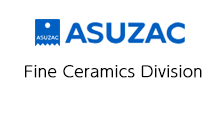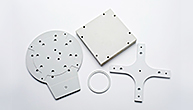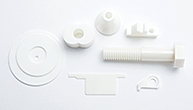Silicon Carbide (SiC)|Ceramics materials
Materials
Silicon Carbide (SiC)

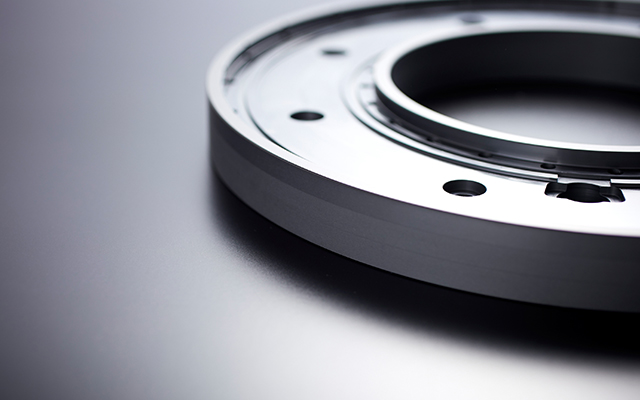
-
Silicon Carbide (SiC)
Silicon carbide (SiC) is a material that can withstand high temperatures of 1400℃ and higher and is resistant to thermal shock. Additionally, compared to other fine ceramics, SiC is outstanding in its chemical stability and corrosion resistance.
SiC has a high Young's modulus elasticity and a small coefficient of thermal expansion, so it is used for parts that require dimensional accuracy even under a harsh, heated environment.
Recently, SiC is increasingly used as a heater peripheral part because of its high thermal conductivity. Two grades are available: the normal grade (A-SiC) that can be used in semiconductor equipment and the special one (SiC-3N), 99.9% of SiC that minimizes the impurities of heavy metals.
-
Features
-
Silicon carbide (SiC) has high thermal conductivity.
-
Silicon carbide (SiC) is resistant to thermal shock.
-
Silicon carbide (SiC) is wear resistant.
-
Silicon carbide (SiC) has excellent heat resistance.
-
Silicon carbide (SiC) is chemically resistant.
-
Silicon carbide (SiC) has low specific gravity.
-
-
Applications
Heater peripheral parts
Plasma-resistant materials
Semiconductor LED trays
Features
ASUZAC offers high-purity silicon carbide (SiC-3N) grades, in addition to general silicon carbide (A-SiC).
Please choose the one that best serves your application.
-
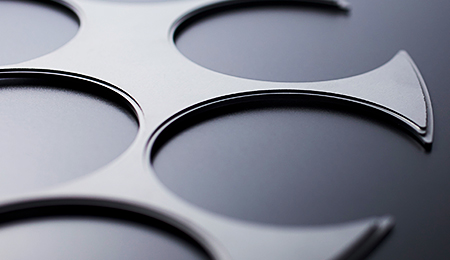
Silicon Carbide (A-SiC)
This is general SiC with high temperature resistance, high strength, high rigidity and high mechanical strength.
High Purity Silicon Carbide (SiC-3N)
SiC-3N has the same degree of purity as normal SiC (A-SiC), but the difference is that SiC-3N contains less impurities of heavy metals.
High Purity Silicon Carbide (SiC-3N)
SiC-3N is a material that contains little heavy metal content.Compared with our normal SiC (A-SiC), the purity is the same, but the content of heavy metals in SiC-3N is reduced.
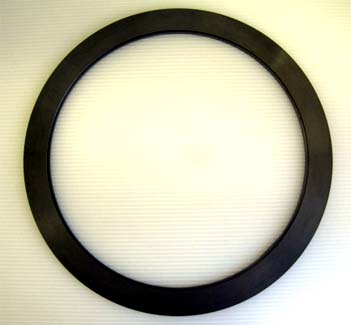
-
Comparison of Impurities - SiC-3N vs A-SiC
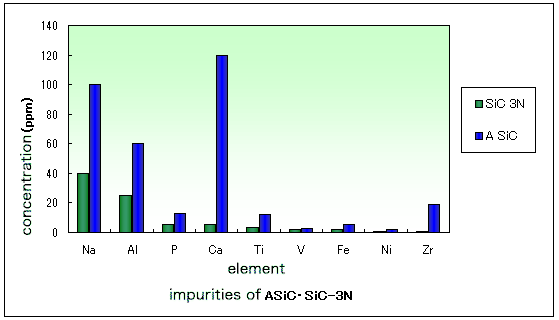
※A-SiC is general SiC originally developed by ASUZAC.
SiC Bonding Technology
ASUZAC has a technique for bonding high-purity SiC components without using an adhesive.(SiC is resistant to high temperatures and heat shock, and chemically stable).
Formerly, green machining and grinding alone had difficulty in shaping a complicated geometry (like paths for liquid or gas) into a single structural body.
This bonding technique, however, has made it possible to manufacture such a complicated structural part without using any adhesives.
Because of this innovation, customers do not need to buy any more multiple parts to be assembled, which contributes to enhancing product reliability as one integrated component. Also customers can enjoy saving their time and money that would otherwise be spent on assembling a number of parts.
-

Nozzle for heat and corrosion resistant
-
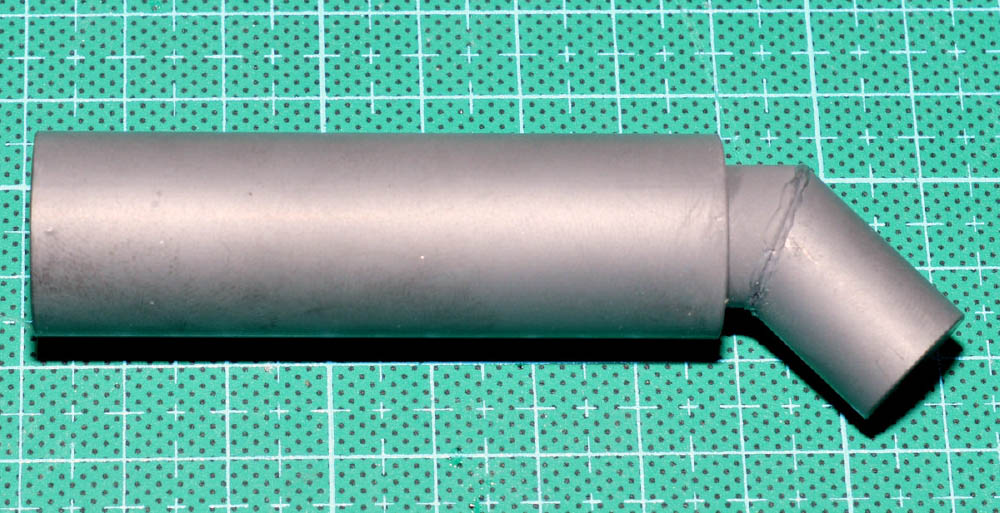
-

Gas heat exchange fluid circuits.
If you are looking for a particular type of SiC, please consult us.
Depending on the shape and specifications, we may ask you to modify the specifications or we may propose some alternative ideas, but even if you do not reach a specific design concept yet, contact us first and we can work out the details together.
Property Comparision Table (SiC and others)
| ASiC | SiC3N | Alumina | Corseed | Alsima L | |||
|---|---|---|---|---|---|---|---|
| Purity | % | - | 99.9 | 99.6 | - | - | |
| Color | - | Black | Black | Ivory | Dark gray | Gray | |
| Density | g/cm3 | 3.14 | 3.19 | 3.94 | 4.24 | 2.41 | |
| Mechanical Properties | Flexual strength | MPa | 410 | 450 | 370 | 310 | 146 |
| Young's modulus | GPa | 430 | 446 | 390 | 288 | 115 | |
| Vicker's hardness | GPa | 28.0 |
28.0 |
14.7 | 10 | 6.5 | |
| Poisson's ratio | - | 0.17 | 0.17 | 0.24 | 0.27 | 0.29 | |
| Fracture toughness | MPa m1/2 | 2~3 | 2~3 | 4 | 3 | 1.4 | |
| Thermal Properties | Coefficient of thermal expansion | x10-6 [Normal temperature ~ 800℃] |
4.1 | 4.1 | 7.7 | 8.8 | 2.1 |
| Thermal conductivity | W/(m•K) | 170 |
140 |
32 | 5.5 | 2.9 | |
| Specific heat | J/(kg•K) | 0.68×103 | 0.57×103 | 0.78×103 | 0.67×103 | 0.75×103 | |
| Electric Properties | Dielectric constant | [1MHz] | - | - | 10.2 | - | 4.8 |
| Dielectric loss tangent | x10-4[1MHz] | - | - | 70 | - | 50 | |
| Volume resistivity | Ω・cm | 5×106 | 5×108 | >1015 | 1 | >1014 | |
| Voltage resistance | kV/mm | - | - | 13 | - | 14.5 | |
| Optical Properties | Light reflectivity | % [Wavelength: 240~2,600nm, Surface roughness Ra 0.8] |
11.1~25.1 |
17~31 |
- | 10.0~26.6 | - |
| Features, application, etc. | - High thermal resistivity - High strength - High corrosion resistivity - Anti-static properties |
- High thermal resistivity - High strength - High corrosion resistivity Anti-static properties |
- High strength - High electric insulation - Anti-corrosion resistivity |
- High thermal conductivity (in reducing atmosphere) |
- Low thermal expansion - High thermal resistivity - Shock resistance - Low thermal conductivity - Used as a heat insulating material |
||
Comparative example of physical properties of SiC between ASUZAC and other manufacturers
| Manufacturer | ASUZAC | ASUZAC | Company A | Company B | Company C | |
|---|---|---|---|---|---|---|
| Product name | ASiC | SiC3N | ||||
| Manufacturing method | Sintering by normal pressure | Sintering by normal pressure | Hot Pressing | CVD | Si-SiC | |
| Density | g・cm3 | 3.15 | 3.18 | 3.15 | 3.21 | 3.05 |
| Vicker's hardness | 28 | 28 | 22 | 26 | ─ | |
| Flexual strength | Mpa | 410 | 450 | 600 | 590 | 220 |
| Elasticity | Gpa | 430 | 430 | 390 | 450 | 280 |
| Fracture toughness | Mpa/cm^0.5 | 2.5 | 2.5 | 4.4 | ─ | ─ |
| Thermal expansion | E-6/K | 4.1 | 4.1 | 4.3 | 4 | 4.8 |
| Thermal conductivity | W/m•K | 170 | 140 | 230 | 250 | 225 |
* Reflectivity varies depending on the wavelength of light. Please contact us for details.
* Regarding fracture toughness, only Alsima L and Corseed were measured by SEVNB methods, and others by SEPB methods.
Experiment on Heat Shock Resistance by dropping a heated test piece into water to see how much SiC can withstand rapid temperature change.
Contact Us
Customizable from single quantity orders.
Please feel free to contact us.
-
ASUZAC Inc.
Fine Ceramics DivisionOpening hours:9:00~17:00(Sat, Sun closed)
FAX : +81-26-251-2160
Product Search
-
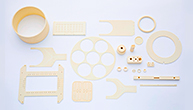
-
Alumina
The most commonly used ceramic material
-
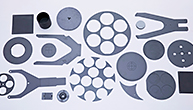
-
Silicon Carbide (SiC)
Heat shock and wear resistance
-
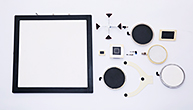
-
Porous Ceramics
Lightweight, suction, heat insulation
-

Ceramics-
 Mechanical Properties
Mechanical Properties -
 Thermal Properties
Thermal Properties -
 Electric Properties
Electric Properties
-
-

Porous Ceramics-
 Mechanical Properties
Mechanical Properties -
 Thermal Properties
Thermal Properties
-
